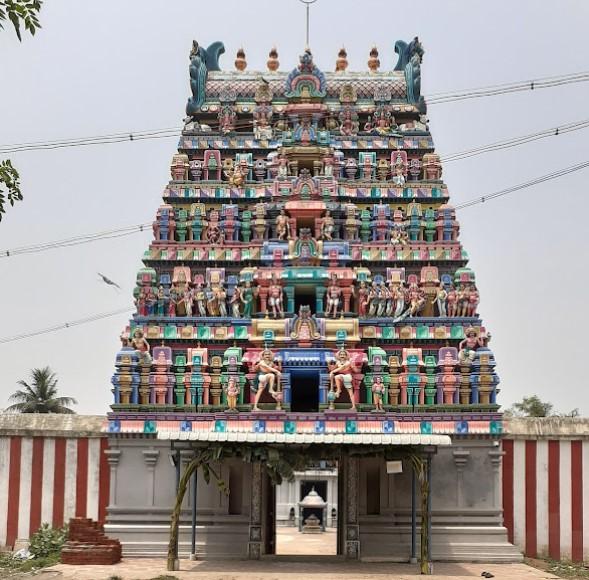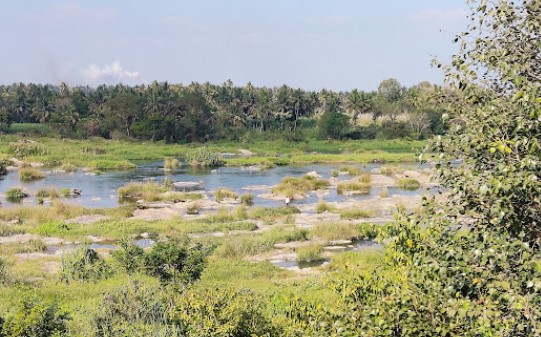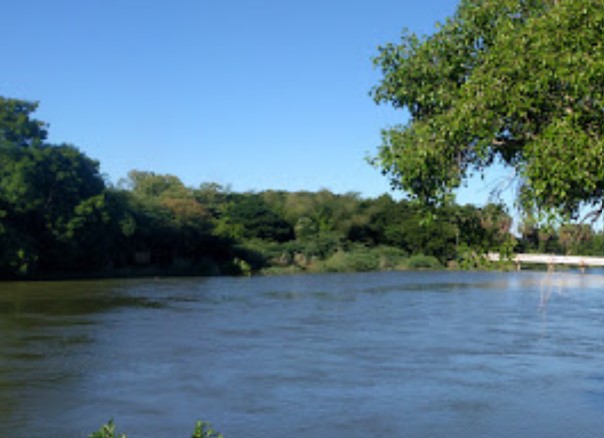- The Uchiravaneswarar Temple, located in Thiruvilanagar village near Mayiladuthurai Town in Tharangampadi Taluk, Tamil Nadu, is a revered Hindu shrine dedicated to Lord Shiva. This temple is notable for being one of the 276 Devara Paadal Petra Sthalams and is specifically recognized as the 40th Shiva Sthalam on the southern bank of the Cauvery River in Chozha Nadu.
- Specifically, it is recognized as the 157th Devara Paadal Petra Shiva Sthalam and the 40th temple located on the southern bank of the Cauvery River in Chozha Nadu.
- The presiding deity, known as Uchiravaneswarar or Thurai Kaattum Vallalar, is a Swayambumurthi (self-manifested) form of Lord Shiva. The temple features a majestic east-facing entrance with a five-tiered Rajagopuram (main tower) and two corridors.
- The last Kumbabishekam (consecration ceremony) was performed on February 2, 1959. The temple is also referred to as Thurai Kaattum Vallalar Temple, and the goddess worshipped here is Veyuru Tholi Ammai or Thurai Kaattum Valli.
- Recognized as one of the Pancha Dakshinamoorthy Sthalams around Mayiladuthurai, Uchiravaneswarar Temple is an important site among the Vallal Temples of the region and continues to be celebrated for its spiritual significance and architectural beauty.
- The Uchiravaneswarar Temple, also known as Thurai Kaattum Vallalar Temple, is a significant Hindu shrine dedicated to Lord Shiva. Located in Thiruvilanagar village near Mayiladuthurai Town in Tharangampadi Taluk, Nagapattinam District of Tamil Nadu, this temple holds a special place in the spiritual landscape of the region.
- Additionally, Uchira Vaneswarar Temple is regarded as one of the Pancha Dakshinamoorthy Sthalams in the vicinity of Mayiladuthurai and is classified as one of the Vallal Temples of the area.
- The sacred water associated with the temple is drawn from the Cauvery River, and the Sthala Vriksham (sacred tree) is the Vizhal plant, further enhancing its spiritual significance.
HISTORY / PURANIC SIGNIFICANCE:
Location and Significance
The Uchiravaneswarar Temple, also known as Thurai Kaattum Vallalar Temple, is situated in Thiruvilanagar village near Mayiladuthurai Town in Tharangampadi Taluk, Nagapattinam District of Tamil Nadu. This temple is dedicated to Lord Shiva and is one of the 276 Paadal Petra Sthalams, celebrated in the early mediaeval Thevaram hymns composed by the Tamil Saivite Nayanar Thirugnanasambandar.
Deity and Legends
- The presiding deity, Uchiravaneswarar (Thurai Kaattum Vallalar), is associated with several legends. One prominent story tells of a devoted Brahmin boy named Arulvithan, who crossed the flooded Cauvery River daily to offer flowers to the lord. During one such attempt, he was caught in the flood but prioritised saving his offerings over his own safety.
- Impressed by his unwavering devotion, Lord Shiva rescued him, earning the title "Thurai Kaattum Vallal," which means "Philanthropist who shows the river bank."
- Another legend involves Saint Thirugnanasambandar, who, unable to cross the flooded river during a pilgrimage, prayed to Lord Shiva for assistance.
- The lord is said to have appeared as a hunter and helped him reach the temple. Additionally, the Sthala Purana mentions a demon named Kapithan, who worshipped the deity and was freed from the “Brahmahathi Dosham.”
PURANIC SIGNIFICANCE 2:
Thuraikattum Vallalar:
As per legend, Thiru Gnana Sambandar reached this sacred land for worship of Lord Shiva. He got struck on the opposite bank of cauvery river due to the heavy floods in the river. He waited for a few days and also searched for a ferry boat to cross the flooded river. He was not able to find anyone to help him cross the river. He prayed to Lord Shiva for help. Lord Shiva in the guise of a hunter came to Sambandar and instructed Sambandar to follow him for crossing the flooded river.
As soon as the hunter got into the water, the river parted into both the ways leaving a space in the middle for them to walk comfortably. Once, Sambandar reached the other bank of the river and looked for the hunter to thank him for his help but he was not to be seen. Sambandar realised that the hunter who helped him to cross the river was none other than Lord Shiva. As Lord Shiva helped in crossing the river, he came to be called as Thuraikattum Vallalar (Thurai means river bank, Kaattum means to show and Vallal means philanthropist in Tamil).
Lord Shiva helping a Brahmin to cross River Cauvery:
- As per legend, a brahmin boy named Arulvithan from this village was an ardent devotee of Lord Shiva.
- He used to offer garlands made of fresh flowers to Lord Shiva every day without fail. One day, as usual he arrived on the banks of Cauvery river carrying a basket full of fresh flowers and noticed that the river was overflowing.
- Knowing the dangerous situation, he started crossing the Cauvery river without any hesitation and headed towards the temple.
- He was trapped in the strong current in the mid of the river. He firmly placed the basket above his head and was not concerned about his life.
- He worried only about the flowers meant for the worship of Lord Shiva.
- Pleased with his devotion, Lord Shiva rescued him from the water current and made him reach the bank safely.
Vila Nagar:
As per legend, the region was densely covered by the Vizhal grass in ancient times. Hence, the place came to be called as Vizhal Nagar which later got changed as Vila Nagar and Lord Shiva came to be called as Vizharkattu Nathar.
Kapithan got relief from Brahma Hatya dosham here:
As per legend, a king named Kapithan worshipped Lord Shiva here and got relieved from Brahmahatya dosham.
Historical Background
- The temple's name, Vizhal Nagar, originates from the region's dense coverage of "Vizhal plants" (a type of grass), which later evolved into Vila Nagar.
- The temple might have been originally constructed in the 6th century CE and was extensively rebuilt in granite during the Chola period.
- It underwent further renovations by the Pandyas and Thanjavur Nayaks.
- There are three notable inscriptions from the temple, including one from the 5th regnal year of Uthama Chola, which records a land donation by his queen for conducting the ardha jama pooja.
ADMINISTRATION:
The temple is one of the 27 under the administrative control of Dharumapuram Aadheenam, emphasising its continued religious importance.


